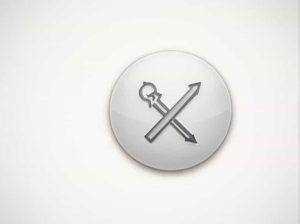Understanding the basics of microeconomics is essential for students studying economics. Class 11 Microeconomics Chapter 1 provides a foundation by explaining key concepts, principles, and the importance of microeconomics in analyzing individual and firm behavior. This content offers comprehensive notes designed to help students grasp the chapter’s main ideas effectively.
What is Microeconomics?
Microeconomics is the branch of economics that studies the behavior of individual units such as consumers, firms, and industries. It focuses on how these entities make decisions regarding the allocation of limited resources. Unlike macroeconomics, which deals with the economy as a whole, microeconomics examines the small-scale aspects of the economy.
Key Features of Microeconomics
- Focuses on individual decision-making.
- Analyzes supply and demand in specific markets.
- Studies price determination and resource allocation.
- Explores consumer and producer behavior.
Importance of Microeconomics
Microeconomics plays a vital role in understanding how markets operate. It helps explain how prices are determined, how resources are distributed, and how various economic agents interact.
Reasons Why Microeconomics is Important:
- Price Mechanism: Explains how prices adjust based on supply and demand.
- Consumer Choice: Helps understand how consumers allocate their income among various goods and services.
- Production Decisions: Guides firms in deciding what and how much to produce.
- Market Efficiency: Analyzes how resources can be allocated efficiently.
- Policy Formulation: Assists governments in designing economic policies to address market failures.
Scope of Microeconomics
The scope of microeconomics includes analyzing various elements that influence decision-making at the individual and firm levels.
Key Areas Covered in Microeconomics:
- Theory of Consumer Behavior: Examines how consumers make choices based on preferences and budget constraints.
- Theory of Production and Costs: Studies how firms decide on the quantity of output and input combinations.
- Theory of Value: Explores how prices of goods and services are determined in different markets.
- Market Structures: Analyzes the nature of competition, including perfect competition, monopoly, oligopoly, and monopolistic competition.
- Factor Pricing: Discusses how factors of production (land, labor, capital) are rewarded.
- Welfare Economics: Evaluates economic efficiency and the distribution of resources for overall well-being.
Central Problems of an Economy
Every economy, regardless of its size, faces three central economic problems due to the scarcity of resources.
1. What to Produce?
- Refers to deciding which goods and services should be produced and in what quantities.
- Societies must choose between producing consumer goods or capital goods, luxury items or essential goods.
2. How to Produce?
- Involves selecting the most efficient production methods.
- Economies must decide whether to use labor-intensive techniques (more human labor) or capital-intensive techniques (more machinery).
3. For Whom to Produce?
- Concerns the distribution of output among different individuals and groups in society.
- Determines who gets how much of the available goods and services based on income levels and purchasing power.
Positive and Normative Economics
Understanding the difference between positive economics and normative economics is crucial in microeconomics.
Positive Economics
- Deals with factual statements and objective analysis.
- Answers questions like ‘What is?’ and ‘What will happen if…?’
- Example: An increase in the price of petrol leads to a decrease in its consumption.
Normative Economics
- Involves value judgments and opinions.
- Answers questions like ‘What ought to be?’
- Example: The government should reduce taxes to increase disposable income.
Types of Economic Systems
Different countries adopt different economic systems to solve the central problems of an economy.
1. Capitalist Economy
- Private individuals own and control resources.
- Decisions are driven by the profit motive.
- Example: The United States.
2. Socialist Economy
- The government owns and controls all resources.
- Production and distribution decisions are made by the state.
- Example: North Korea.
3. Mixed Economy
- Combines features of both capitalist and socialist systems.
- Both private and public sectors coexist.
- Example: India.
Scarcity and Choice
The Problem of Scarcity
- Resources like land, labor, and capital are limited.
- Human wants, however, are unlimited.
- Scarcity forces individuals and societies to make choices about how to allocate resources efficiently.
Role of Choice
- Since resources are scarce, choosing one alternative means giving up another, leading to the concept of opportunity cost.
- Example: Choosing between spending on education or healthcare.
Opportunity Cost
Opportunity cost refers to the value of the next best alternative that must be forgone when making a decision.
Key Points About Opportunity Cost:
- Helps in understanding trade-offs in decision-making.
- Influences both consumer choices and production decisions.
- Example: If a student spends time studying economics instead of working a part-time job, the opportunity cost is the wage the student could have earned.
Microeconomics vs. Macroeconomics
Understanding the distinction between microeconomics and macroeconomics is essential.
| Microeconomics | Macroeconomics |
|---|---|
| Studies individual units. | Studies the entire economy. |
| Focuses on supply, demand, and pricing in specific markets. | Focuses on aggregate indicators like GDP, inflation, and unemployment. |
| Analyzes consumer and firm behavior. | Analyzes national and global economic policies. |
| Examples: Price of a smartphone, wages in a company. | Examples: National income, fiscal policy. |
Assumptions in Microeconomic Analysis
Microeconomic theories are based on certain assumptions that simplify complex real-world problems.
Common Assumptions:
- Rational Behavior: Consumers and producers aim to maximize their satisfaction and profits, respectively.
- Ceteris Paribus: Other factors remain constant while analyzing the effect of one variable on another.
- Perfect Knowledge: All economic agents have complete information about prices and products.
Applications of Microeconomics
Microeconomics has various real-life applications that make it a vital part of economic analysis.
Key Applications:
- Business Decisions: Helps businesses determine pricing, production levels, and market strategies.
- Policy Making: Assists governments in understanding market failures and designing effective policies.
- Resource Allocation: Aids in the efficient distribution of resources among competing uses.
- Welfare Analysis: Evaluates how changes in economic policies affect consumer welfare and social well-being.
Class 11 Microeconomics Chapter 1 lays the groundwork for understanding how individual economic units operate within a market system. It introduces key concepts such as scarcity, opportunity cost, market mechanisms, and economic systems. By mastering these topics, students gain insights into how daily economic decisions shape the broader economy.
Understanding microeconomics is crucial not only for academic success but also for making informed decisions in everyday life. With these comprehensive notes, students can confidently approach the study of microeconomics and apply its principles to real-world scenarios.



